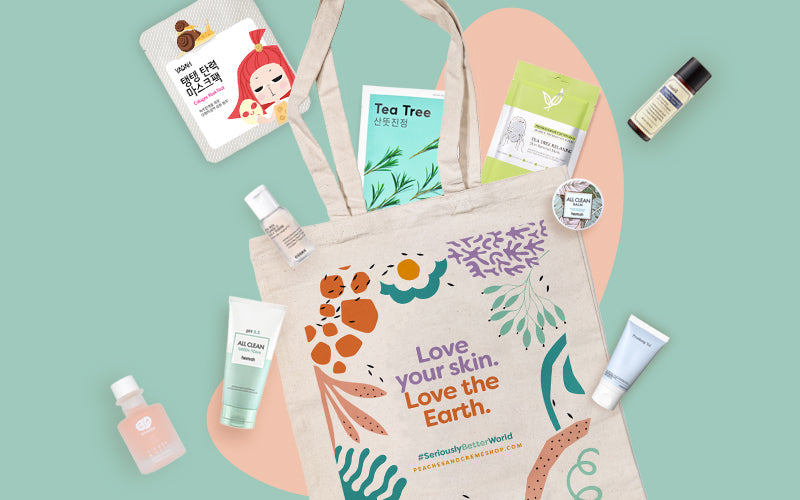Probiotics in Skincare: Strengthening the skin barrier against acne
Our skin is host to diverse bacteria ecosystems. Some of these microbes actually promote skin health, reinforce your skin's natural barrier against bad bacteria, and balance your skin's pH levels. The greater the variety of bacterial species on the skin, the healthier its barrier will be; and the less dryness, inflammation, itching, and stinging you'll experience.
However, the constant use of harsh facial cleansers strips your skin of these healthy bacteria or the 'good bugs', consequently damaging your skin's natural bacterial ecosystem. This, in turn, makes your skin stressed and dry, causing skin issues like breakouts, eczema, rosacea flares, etc.
So what can you do to build back your skin’s natural defenses and bring it back to its balanced state? Probiotics.
What are probiotics?
Probiotics can build back your skin's natural defenses and healthy function. Probiotics are microorganisms that are similar to the naturally occurring bacteria in your gut. And just like the food you take to keep your gut happy, probiotics for the skin work in a similar way as they do for the digestive system. They help make our skin remain in a balanced state and can also have skin barrier-balancing properties when applied topically to the skin.
"Probiotics in skincare optimize the healing benefits of our skin’s good bugs," says Dr. Whitney Bowe to Forbes Magazine, a NYC-based dermatologist. "This includes acting as a protective shield against bad bacteria, dialing down inflammation, preventing premature aging in skin, among other things."
For those who have acne-prone skin, using probiotics topically "creates an optimal environment for the good bugs, swinging the balance in your favor against zit-causing bacteria — the primary culprit being Propionibacterium acnes," says Dr. Klein to Forbes Magazine, Fellow of the American Academy of Dermatology and Partner at Modern Dermatology, Connecticut.
How do probiotics work?
Prebiotics, probiotics and post biotics
Prebiotics are the food source of probiotics. These are the non-digestible compounds found in foods like whole grains, bananas, greens, onions, garlic, and soybeans that we do not digest. They don’t directly benefit our skin but they naturally fuel the growth of probiotics to support their vitality and help them thrive so they can effectively do their job. "To put it simply, probiotics contain the good guys, and prebiotics contain what the good guys like to consume to ensure their own survival and proliferation," says Dr. Bowe. Prebiotics also promote a more diverse array of bacteria, and diversity is key to healthy skin.
As probiotics break down on skin’s surface, they create other skin-beneficial substances known as postbiotics. Postbiotics include hyaluronic acid, peptides, enzymes, organic acids, polysaccharides, and vitamins — all of which further reinforce your skin’s healthy barrier, help diminish signs of aging, boost hydration, and improve skin’s healthy, vibrant tone.
It’s the synergy between these “biotics” that makes all the difference when it comes to probiotic skin care.
Probiotics in skincare
So what exactly does probiotics do when applied to the various skincare products in our routine?
What are the beauty benefits of probiotics?
From cleansers and serums, to masks and mists – skincare with probiotics are packed with types of friendly bacteria that promise to soothe inflammation, strengthen the skin's barrier, and even diminish acne. This translates to a complexion that’s not too dry nor too oily, and skin that can effectively repel the environmental conditions that cause inflammation. In other words, if you want a flawless glow, nurturing your skin’s moisture balance is the place to start.
Probiotics play a crucial role in keeping the skin’s moisture level in balance, meaning they:
- Strengthen skin’s surface against environmental invaders;
- Enhance skin’s ability to become—and stay—properly hydrated;
- Diminish factors that trigger sensitized, reddened skin;
- Visibly improve signs of dryness, including a tight, uncomfortable feeling;
- Restore a healthy pH balance to the skin's surface.
Tips to maintain a healthy and balanced skin barrier
Healing and nourishing your skin’s moisture balance is crucial to the health of your skin. Here are some ways that you can do just that.
- Avoid harsh scrubbing. Don't exfoliate daily. Use a gentle, pH balanced cleanser and only exfoliate at most twice a week.
- Eat more fiber. Fiber-rich foods like oats, barley, asparagus and leeks are an excellent source of prebiotics. These plant-based fibers improve immune function and boost the growth of good bacteria in your gut.
- Take care of your gut. What you put in your body has a direct impact on the health and radiance of your skin. So, eat gut-friendly, fermented foods and beverages such as kombucha, miso, kefir, yogurt and sauerkraut. Some dermatologists recommend supplementing a healthy diet with an oral probiotic to nourish their skin from the inside out.
What to look for in probiotic skincare
Seek out a formula that contains a mix of “biotic” ingredients (pre-, pro-, and post-) for a well-rounded approach to stabilizing and maintaining skin’s healthy microbiome:
- Proven probiotic skin care ingredients include the species Lactobacillus, Bifidabacterium, Vitreoscilla, and various ferments.
- For sources of prebiotics, look for ingredients with prebiotic plant sugars, such as xylitol, rhamnose, and a large group of ingredients known as fructooligosaccharides (including raspberry oligosaccharides). Glucomannan is a particularly interesting prebiotic due to the way it works with a wide range of probiotics that help control acne. Foods with prebiotics include garlic, onions, oats, barley, wheat bran, asparagus, bananas, and flaxseed as well as a plant fiber known as inulin, found in chicory root. Some of these plant extracts or their derivatives are also included in skin care products where you can easily reap the benefits of applying prebiotics to skin.
- For postbiotic compatible ingredients, the hyaluronic acid, peptides, and ceramides we mentioned above make a great compliment for what probiotics can do for skin.
- Lysate ingredients are also beneficial to probiotic skin care. As derivatives of probiotics, lysates work in tandem to help reinforce skin’s microbiome and diminish skin issues.
PRODUCTS WE RECOMMEND
Neogen Dermalogy Probiotics
Contain Lactobacillus Ferment Lysate, Bifida Ferment Lysate, Xylitol
Whamisa Products
Contain Lactobacillus Ferment Filtrates and various plant and seed extracts
Missha Time Revolution Night Repair ProBio Ampoule
Contains 10 probiotics and various plant extracts
In Conclusion
Products that utilize the correct formulary techniques are essential to getting the most out of your probiotic skin care. A combination of prebiotics and probiotics will deliver the best results, ensuring skin has what it needs to keep its barrier intact, smooth, and healthy looking.
Probiotic skin care products are quite delicate. Most of them have a six month expiration date after opening and need to be stored in a cool environment, some even in the fridge. So, read the packaging instructions carefully. For best results, look for a combination of “biotic” ingredients to take advantage of what their special synergy can do for all skin types.









Leave a comment